Ancient Egyptian mythology is the collection of myths and religious practices belonging to the Nile River Valley civilization. The beliefs of the ancient civilization lasted until the fall of the Ptolemaic Dynasty in 30 BCE at the hands of the Roman Empire. Thereafter, Egypt became a Roman subdivision and Christianity became the main religion of the country.
The stories of ancient Egypt are among the oldest in the world. What mythology has survived offers invaluable insight into the ancient culture that once dominated Northeast Africa. Below, we’ll rediscover the mythology that sustained generations eons ago.
Table of Contents
When Was Egyptian Mythology Created?
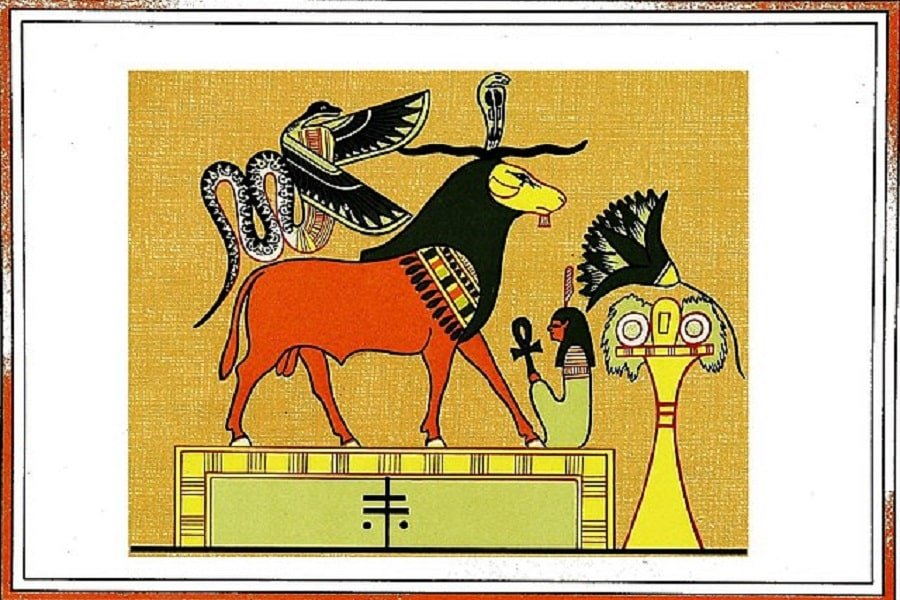
Egyptian mythology as we know it was established back in the Early Dynastic Period (3100 – 2686 BCE). Rather than Egyptian literature, evidence of Egyptian mythology’s inception is found in funerary practices and cultural artwork. By the Predynastic Period, the earliest known ancient Egyptian gods and goddesses began to emerge. The rest, as they say, is history.
The Ancient Egyptian Pantheon
The ancient Egyptian pantheon is filled with approximately 1,400 colorful characters. Of these gods, their worship was spread across the ancient world – from home shrines to local temples. Not to mention that the gods were thought to be everywhere: from the waters of the Nile to the blazing sun. Even the fertile earth itself was a revered deity.
Each day discoveries are being made regarding the gods and goddesses of ancient Egypt. Although we may not know all of their names and roles today, we never know what waits on the horizon. Perhaps Akeru has an idea?
The Ogdoad
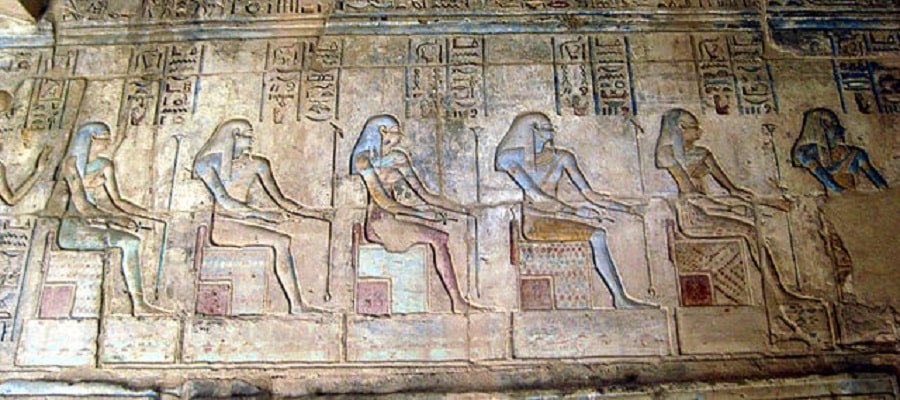
In ancient Egypt, the Ogdoad – or the “Eight” – were a collection of primordial deities. They were there at the beginning of creation and are counted as the first generation of deities. The eight deities were first referenced during Egypt’s Old Kingdom, though were considered archaic even then.
The Ogdoad was likely recognized, though not actively worshiped, by the start of Egypt’s written history. Their prevalence in the Pyramid Texts and subsequent Coffin Texts suggests a significant shared role in the afterlife. By the time of the New Kingdom, Egyptian theologians had renewed interest in the Ogdoad and looked into revamping their creation myth.
Primarily worshiped by the theologians in Hermopolis (Khemenu), the Ogdoad consists of four couples. Each couple shares a name and has a specific primordial attribute assigned to them.
- Nu and Naunet (sky and water)
- Hehu and Hehut (atmosphere, generations, and infinity – or the passage of time)
- Kekui and Kekuit (primordial darkness and/or day-to-night cycles)
- Qerh and Qerhet (repose, stillness, or peaceful death)
The Ennead

Now, the next set of ancient Egyptian gods is the Ennead. They’re the popular kids of the pantheon and are the undeniable fan-favorites of Egyptian legend. These nine deities include the sun god Atum and his descendants.
According to Heliopolitan oral tradition, Atum (later known as the composite Atum-Ra), was born sometime during the deluge myth. From then on, he became the first of the gods, the first king, and an archetypal creator god. He begets Shu and Tefnut, who went on to have their children, Geb and Nut. Against the wishes of their father, the union of Geb and Nut gave birth to Osiris, Isis, Set, and Nephthys.
The Great Ennead was one of many collections of gods throughout the realms of Upper and Lower Egypt. Groups of 2, 3, 4, 8, and 9 deities were the most common. Variations to Egyptian mythology across ancient Egypt lead to a plethora of practices and beliefs. Occasionally, these beliefs would be in direct opposition to others.
Heliopolitan beliefs were not fully accepted in the rest of Egypt, with regions and cities bearing their own personal religious practices. For example, followers of Ptah in Memphis disregarded Heliopolis’ reverence of the Ennead since their creation myth regards Ptah as the creator god and parent of Atum. Likewise, discourse could be found among those few who venerated the Ogdoad’s role in creation.
* Horus the Elder was an occasional addition to the Great Ennead, although not frequently counted amongst the standard nine
The Four Sons of Horus
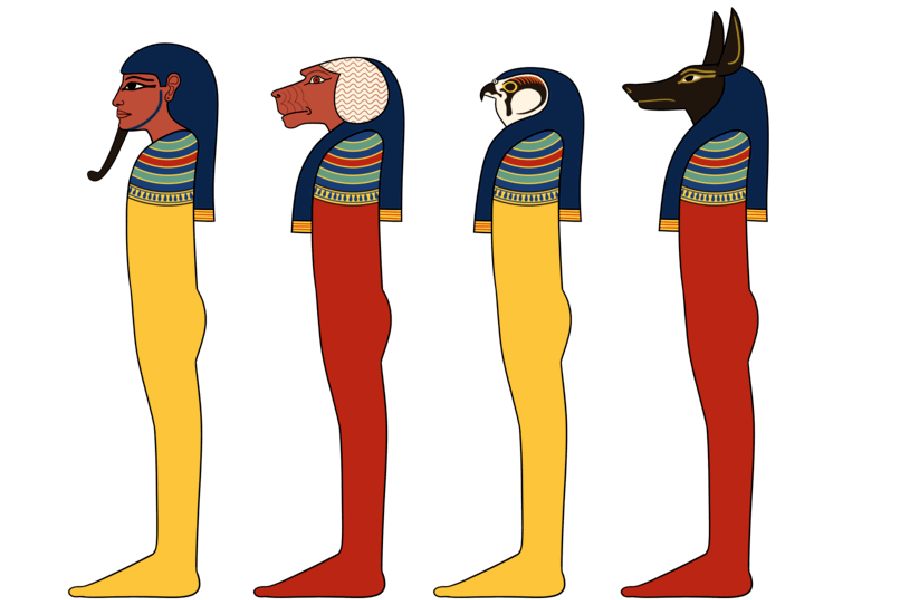
As far as the Four Sons of Horus are concerned, they are all about canopic jars. Literally. The Four Sons each represent a canopic jar and their respective organs. They are guardians, protectors, and funerary deities.
Although they are chucked up to be nothing but protectors of the dead king in the Pyramid Texts, the Four Sons of Horus are considered to be among the most ancient deities. Not only the gods of canopic jars, but the Four Sons also represented cardinal points for the ancient Egyptians and held great astronomical importance.
- Imsety (the Liver)
- Hapi (the Lungs)
- Duamutef (the Stomach)
- Qebehsenuef (the Intestines)
More often than not, two of the Sons would be switched, thereby indicating that there was no strict protocol to which Son had which organs. What was more important is that the Four Sons remained together.
The number 4 appears to hold great significance within ancient Egypt and was counted as a sacred number. It represented balance, being closely linked to the entity Maat. At some point in Egyptian history, canopic jars became more symbolic burial pieces than actual containers for displaced viscera.
The Eye of Ra
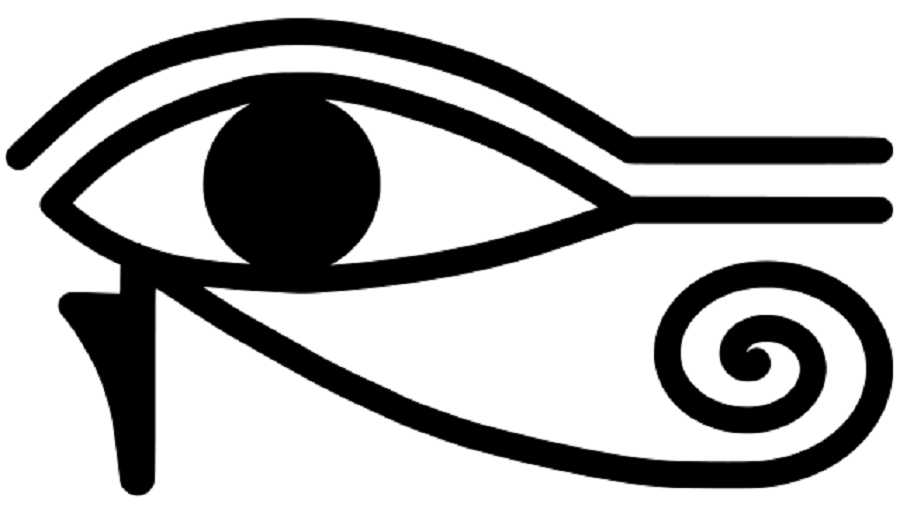
The deities that compose the Eye of Ra are exclusively goddesses. Thought as the feminine counterpart of the sitting solar deity, they were the embodiment of the sun god’s wrath. The Eye of Ra was responsible for crushing his enemies and, by extension, the enemies of the pharaohs.
Those goddesses associated with the Eye of Ra in Egyptian myth range from the lion-headed goddess Sekhmet to the serpentine Wadjet. All the goddesses of the Eye are close to Ra, whether they were identified as his mother, sister, daughter, or consort. We even have two of Egypt’s most famous cat gods!
- Bast
- Hathor
- Mut
- Nekhbet
- Sekhmet
- Tefnut
- Wadjet
The 42 Judges of Maat
Also known as the Assessors of Maat, the 42 Judges were major pagan gods tied to the judgment of the soul in the afterlife, Duat. A conference would be held with the Judges in attendance. Anubis and Osiris would also be there, among other Egyptian deities. The soul of the dead would then recite the Negative Confession of Maat, that they lived in adherence to the principles and revelation of the gods.
In the Hall of Truth, it would be a pretty bad time to get stage fright. Thankfully, notes would have been supplied in the tomb for easy reference. Huzzah!
Having a Negative Confession on hand would be especially important when considering each Confession would be tailored to the deceased individual. The content of a Confession would depend on the region where the deceased lived, their social class, and their career. A priest would not recite the same confession as a craftsman, as it was thought that they lived very different lives.
The most comprehensive picture of the 42 Judges comes from the Papyrus of Ani and The Book of the Dead. The Assessors of Maat each represented one of the 42 nomes (i.e. districts) of ancient Egypt. Moreover, each Confession would be addressed to one of the 42 Judges who were to then determine the validity of the deceased’s claims.
Cavern and Gate Deities
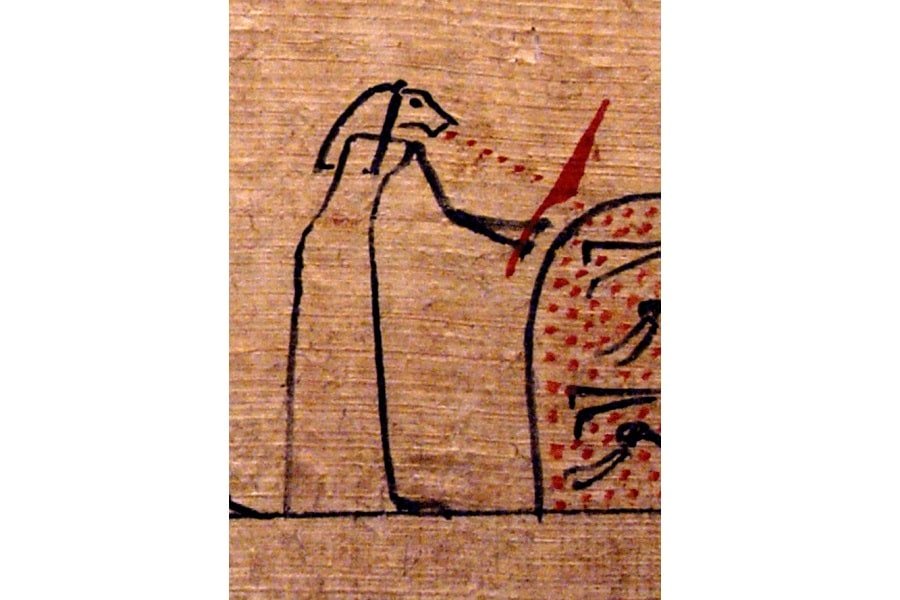
The cavern and gate deities of ancient Egypt are a bit more…creepy, to say the least. Be ready for those gods that behead and devour, because that’s what these gods and goddesses are all about.
Way down in Duat dwell a handful of Egypt’s Chthonic deities. Their roles are restricted to the affairs of the afterlife.
Oh, and unintentionally – or intentionally – scaring the souls out of the living.
The cavern deities are known for their frightening dispositions and gnawing hunger. As minor deities, they are seldom mentioned outside of the funerary text, The Book of Caverns. The text details the twelve caverns of Duat and their looming residents, all of whom are responsible for punishing those souls who didn’t pass the Weighing of the Heart. Honestly, the cavern deities make the gate deities seem tame.
In Egyptian mythology, the gate deities were a collection of minor deities that guarded the gates of Duat. Ancient Egyptians believed that there were several gates leading up to the underworld, all of which had their personal gate guards attending them. The gates would be opened for the souls of the dead and the solar barge, Atet, as described in The Book of Gates. Some sources claim there are over 1,000 deities associated with the gates; meanwhile, The Book of the Dead notes only seven. However, tomb paintings in the Valley of the Kings address twelve separate gates.
Akhenaten and Atenism

Pharaoh Akhenaten – previously Amenhotep IV – goes down in history as the king who tried to enforce monotheism in Egypt’s Amarna Period. A controversial figure, Akhenaten’s religion of Atenism worshiped the light of the sun itself as a god. The sun god, Aten, is represented as a sun disk.
To no one’s surprise, Atenism didn’t catch on.
No one was rooting for Atenism, save for Akhenaten and those within his court. Most of Atenism’s unpopularity has to do with it being forced upon the populace, primarily through the defacement of polytheistic religious iconography and laws against traditional polytheism. Not to mention, no one liked Akhenaten too much. He ruled during a time of social upheaval and created more instead of quelling it.
You see, up until Akhentan’s rule, Egypt had a rigorous status quo that the civilization had been abiding by for centuries. With his ascension and the introduction of Atenism, things started to go downhill. He moved to the capital city, neglected official duties, and refused to deal with growing social unrest. Although the art scene of the Amarna Period flourished, Egypt’s power began to waver.
Who are the 9 Main Gods of Egypt?
The 9 main gods of Egypt are usually considered the Ennead of Heliopolis. Atum and his direct descendants are among the most well-known of the deities of ancient Egypt. They were not, however, universally accepted as being the most important.
Egyptian myths, as they were, left room for a lot of interpretations. It isn’t exactly an error in modern translations either: Egyptian mythology really did have a ton of variations.
Some folks believed that the world was created in a completely different way than what their neighboring city believed. Many thought the creation was the doing of a sun god, while the cult of Ptah believed the patron of craftsmen was responsible for existence. Others lived within cities and settlements that didn’t necessarily venerate a creator god, rather than a guardian city god.
The big takeaway is that human beings will do what works for them. Way back in ancient Egypt, no one was really on the same page when it came to religion. Thus, the Great Ennead were the main gods of Heliopolis, but not the whole of Egypt. Many deities had various roles and interpretations, leading to far-reaching cult influences and religious discourse.
Why Do Egyptian Gods Have Animal Heads?

So, you may have noticed one striking feature of the Egyptian gods and goddesses: their heads. While they carry the divine grace of any other deity (and the good looks), most of the Egyptian pantheon have animal heads and human bodies.
Otherwise called zoomorphism, animal-headed gods are nothing new. Way back during the Stone Age, mankind’s ancestors began to create zoomorphic images with possibly religious connotations. Ancient peoples likely realized that some animals had set characteristics, those both admirable and fearsome.
READ MORE: Cave Paintings: The Art of the Ancients in Europe, Africa, Asia, and More!
Gods who have the form of a certain animal are believed to share characteristics with that creature. Over time, these animals became sacred, with some being interpreted as the incarnations of the gods themselves. One of the greatest examples of sanctified animals is in the case of the cult of Bastet, whose popularity in ancient Egypt led to the modern misinterpretation that Egyptians worshiped cats.
What Happened to the Egyptian Gods?
By the early 5th century CE, the ancient Egyptian religion began to decline in favor of Christianity. At this point in history, Egypt was considered a division of the Roman Empire and thus had to contend with Roman laws as instituted by the reigning emperor. The outlawing of pagan cults in the 6th century CE impacted traditional Egyptian religious practices and further enforced the Romanization of the Egyptian populace. When Emperor Constantine converted to Christianity and legalized its practice in 311 AD, those Christians within the Empire no longer had to fear persecution.
Called Coptic Orthodoxy, Christianity in ancient Egypt was based in Alexandria and became known as one of the largest centers of Christianity in the ancient world. Aspects of Egyptian pagan worship became a part of local Christian practices. Moreover, myths and certain motifs found in Egyptian lore donated to early Christian concepts: the Holy Trinity, resurrection, and life being spoken into creation.

The Religious Practices of Ancient Egyptian Mythology
The religious practices of ancient Egyptian mythology revolve around their polytheistic system of belief. Myths and gods were celebrated regularly with feasts, festivals, and sacrifices. Temples were public institutions of worship, while in-home shrines were reserved for household deities. Priests were local leaders, though they would defer to the pharaoh if the religious observation calls for his leadership.
Mythology was regularly revisited and relived. Most myths inspired the festivals that filled the calendars of the ancient Egyptians. Even the five added days that allowed Nut to give birth to her children were observed as the Epagomenae.
Festivals
The festivals celebrated in ancient Egypt would have been spectacles to behold. Cult processions would have been led on land and across the Nile. Some water shows would be performed on the Mediterranean and Red Seas. There would be days of feasting, drinking, dancing, and singing.
READ MORE: Who Invented Water? History of the Water Molecule
Who said the worship of the gods had to be boring?!
Some of the most important festivals of ancient Egypt had to do with the veneration of specific deities found in popular Egyptian myths. The celebration of New Year’s Day, called Wepet-Renpet (“The Opening of the Year”), was an event led by priests of the cult of Osiris. The event celebrated the god’s rebirth and the roles his sisters had in his resurrection. At the start of the new year, there was no better time to venerate the god of rebirth.
Other ancient Egyptian festivals hosted in ancient Egypt include…
- The Festival of Drunkenness (the Tekh Festival) to honor Hathor
- The Thoth Festival
- The Wag Festival
- The Opet Festival
- The Festival of Khoiak (Sokar)
- The Beautiful Feast of the Valley (Wadi Festival)
Cults
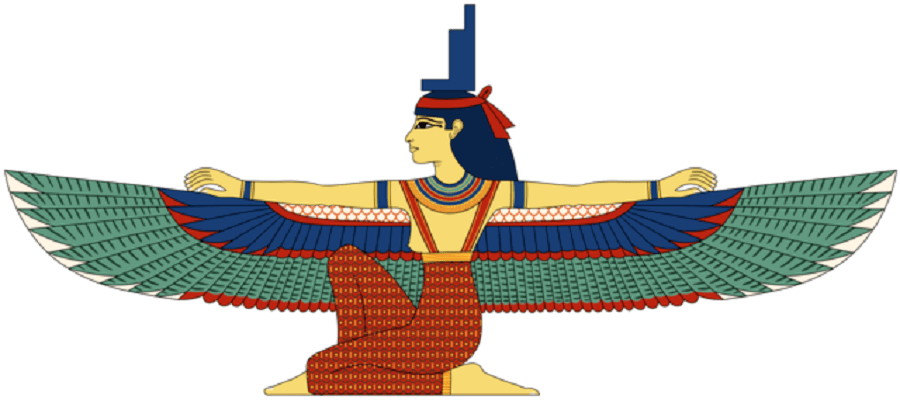
Most major gods had cults. Minor gods – not so much. There were even cults dedicated to the reigning king!
Cult worship in ancient Egypt was standard practice. Moreover, thanks to Egypt’s advantageous commercial location, their cults’ influence spread far past regional bounds. The most famous example of this is the cult of Isis, which was prominent throughout archaic Europe and the Middle East.
The cult of Isis – the mysteries of Isis in the Greco-Roman societies – was popular amongst women, servants, and slaves. Although adjustments were made to religious texts and practices as the cult spread, the cult of Isis became one of the most practiced worships of the classical world. The only other Egyptian god to achieve similar recognition is Serapis, a Greco-Egyptian variation of Osiris-Apis.
Sacrifices
In ancient Egyptian beliefs, life continues after death. It was thought that worldly possessions could be carried into the afterlife. While this explains why burial tombs are filled with such splendor, it also explains why there are specific items required for burial. Thankfully, the preservation of ancient artifacts within Egyptian tombs has given us a clearer picture of sacrifices in Egyptian Mythology.
READ MORE: The Egyptian Afterlife: Mummification, Burial Practices and Beyond
When a king would die – or even a high-ranking noble – it would be customary to ritually kill several of their servants. They aren’t blood sacrifices, really, to appease any specific god. Instead, the killed servants would be entombed with their masters so that they would be able to continue their service. Retainer sacrifices were, above all else, a show of power and wealth. It was also not unheard of for animals to also be sacrificed for the sake of company after death.
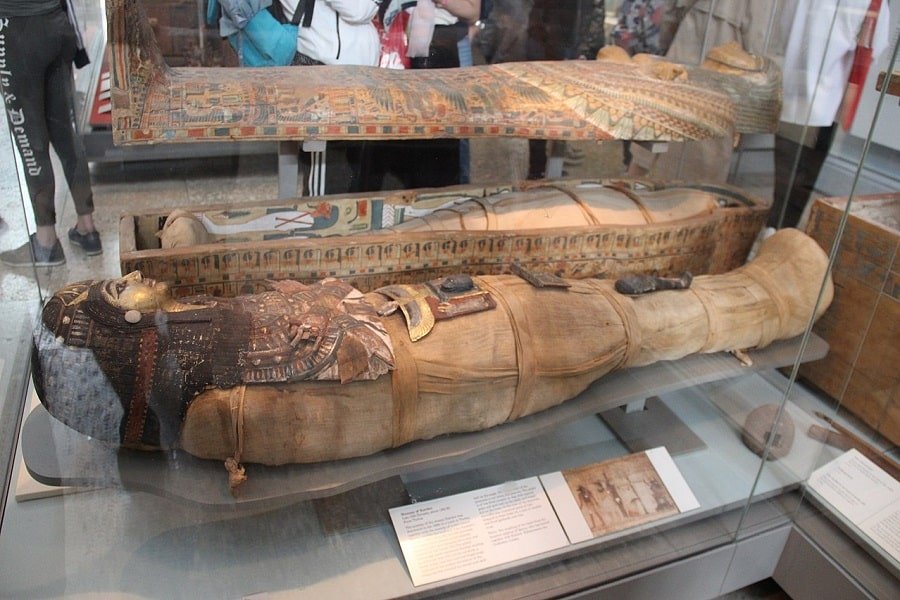
The Ka, the Ba, and the Akh
The ancient Egyptians had a unique approach to the concept of the soul. There are several components, or parts, to a soul. This belief was also applicable to the gods, with a number of the deities existing as an aspect of a separate god’s soul.
In the journal article “Soul-Concepts” in Ancient Near Eastern Mythical Texts and Their Implications for the Primeval History author Michaela Bauks states that “Egyptian anthropology introduces different incorporeal elements, significant in the context of the journey to the afterlife. Breath seems to be the life force of the living body.” Thus explaining the significance of the goddess Heqet breathing life into human beings at their birth. It is further emphasized in variations of the world’s origin story where the Egyptian creator god would “breathe,” or speak, life into existence.
- Khet (physical body)
- Sah (one’s spiritual body)
- Ren (the identity)
- Ba (personality)
- Ka (the vital essence)
- Ib (the heart)
- Shut (the shadow)
- Sekhem (form)
- Akh (the collective pieces of the soul)
Famous Myths and Legends of Egyptian Mythology
Egyptian myths often take the form of epic poems, akin to the Greek Iliad and Odyssey. They were recorded on papyri and can be found represented in tomb paintings. Prior to the development of a written language, Egyptian myths, and legends were relayed through oral traditions.
- The Creation Myth of Ra
- The Creation Myth of Ptah
- The Creation Myth of Atum
- The Creation Myth of Amun
- The Myth of Osiris and Isis
- Anubis and the Weighing of the Heart
- The Myth of Horus and Set
- Thoth and Writing
- Sekhmet and the Destruction of Mankind
- The Lioness Bastet and the Defeat of Apep
- The Bennu and the Phoenix

What is the Most Famous Egyptian Myth?
The most famous of all the Egyptian myths is the thrilling tale of romance and revenge in the resurrection of Osiris. Immediately following Osiris’ ascension to the throne, the myth recounts Osiris’ murder by his brother Seth and his subsequent resurrection at the hands of Nephthys and Isis. The resurrected Osiris mated with his sister, Isis, who then gave birth to the infant Horus.
Raised in reeds, Horus grew to avenge his father and defeated the chaotic Seth. Thereafter, he gave Osiris his eye. The Eye of Horus goes on to sustain Osiris in the afterlife.
Ancient Egyptian Mythology Heroes
The heroes of ancient Egyptian mythology don’t stand out as demigods or legendary warriors. Instead, they are famous physicians, healers, priests, and – above all else – magicians.
Ancient heroes tend to reflect the values of their respective cultures. Where many civilizations have heroes that embody strength, wit, or resilience, Egypt’s heroes are marked by their spiritual fortitude. They were magic wielders whose impressive feats in life lead to their deification after death.
- Imhotep
- Khaemwaset
- Setna*
- Se-Osiris
- Amenhotep (son of Hapu)
* Setna is thought to be Khaemwaset, with accounts of the character first being recorded hundreds of years after Khaemwaset’s death; his son, Se-Osiris, was an even more powerful magician according to legends

Gods and Kingship
There is an undeniable connection between the Egyptian pantheon and the kings of ancient Egypt. The pharaohs were considered divinely charged with being the representatives of the gods. It was their job to – in a sense – shepherd their people and remain connected to the gods and goddesses. Egyptian belief in the rule of the pharaoh can be tied back to folklore, which cites the royal family as being descendants of the god Horus.
Mythical Creatures of Ancient Egypt
Egyptian belief surrounding mythical creatures dates back to the earliest start of civilization. A number of mythical creatures of ancient Egypt can be counted as minor deities in some scholarly lens. Others, like the scarab beetle, are largely symbolic of a larger religious motif.
- Abtu and Anet
- Bes
- The Griffin
- The Sphinx
- The Hieracosphinx
- Khepri (the scarab beetle)
- Uraeus
- Bennu
- The Medjed
- The Set Animal (not Set, the god)
The Monsters of Egyptian Mythology
As with most ancient civilizations, the monsters that lurk in Egyptian mythology are there to send a warning. Whether it is to avoid wandering too close to the banks of the Nile or to steer clear of temptation, the monsters of Egyptian mythology make a surprisingly short list.
The most famous Egyptian monster is Apep, a snake god of primordial chaos. It was believed that each night, Apep would battle Ra and be defeated. The conflict highlights the cosmic struggle between order (Maat) and disorder.
- Ammut
- Apep
- El Naddaha
- Babi
- The Serpopard*
* “Serpopard” is a modern term for the monster as it bears both serpentine and leopard qualities; we do not know the ancient name of the Serpopard
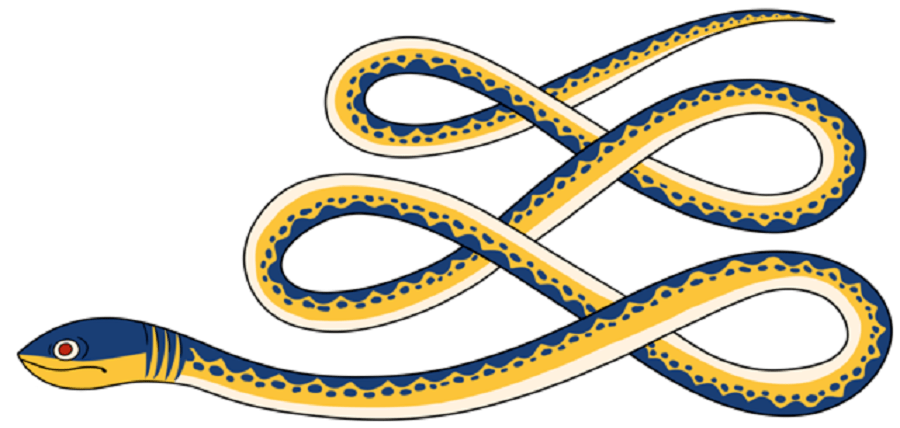
Legendary Objects in Egyptian Mythology
The legendary objects in Egyptian mythology are a fascinating subject for a handful of reasons. Most notably: they aren’t any old enchanted Egyptian weapon or cursed family heirloom. Instead, legendary items include those objects that are personal to the ancient Egyptian gods and goddesses themselves.
Above we discussed the kings of Egypt and their unique roles as living gods. If not gods, they were certainly selected as messengers of them. Several legendary artifacts are tied to the symbolic rule of the pharaoh.
- The Eye of Horus
- The Eye of Ra (the Udjat Eye)
- The Ankh
- The Ben-Ben
- The Crook and the Flail
- The Djed (a.k.a. Osiris’ backbone)
- The Shen
- The Was-Sceptre
- The Lotus (Sesen)
- The Tjet
Hit Plays Depicting Egyptian Mythology
Live performances were a hit in ancient Egypt, with the populace regularly enjoying public theater. Oftentimes, plays revolved around a significant myth or legend. The Greek historian Herodotus compared the theater of Egypt to Grecian mysteries; he details the theatrics performed on a man-made lake that depict Osiris’ life, his death, and his eventual rebirth to triumph over his enemies. In a number of plays, the ruling pharaoh would participate in the role of a divine hero.
Unlike the beloved tragedies of their Greek neighbors, the Egyptian plays were nearly entirely devoid of dramatics. They were primarily retellings of famous myths, and just about all performances had theological implications. Backdrops, props, dances, and choruses were all facets of ancient Egyptian plays. During the Greco-Roman period, famous Greek and Roman plays were also performed.
- Isis and the seven scorpions
- The contendings of Horus and Seth
- The birth of Ihy

Amazing Artwork of Egyptian Legends
Art of ancient Egypt includes tomb paintings, statues and architecture, pottery, papyrus paintings, jewelry, and friezes. The earliest examples of Egyptian artworks date back to the Merimde culture (5000 to 4200 BCE) of the Western Nile River Delta. The Amarna Period, meanwhile, is known for its gorgeous artwork, despite all of its religious and social strife. Among Amarna artwork, the Bust of Nefertiti is among the most publicly known.
As with all ancient artwork, the art of ancient Egypt had multiple purposes: from aesthetics to religious iconography. Notably, the Xkr (“Kheker”) frieze is purely ornamental, whereas an object like the Rosetta Stone had been key to solving hieroglyphs in early Egyptology.
- The Great Sphinx of Giza
- The Heart Scarab of Hatnefer
- The Golden Tree of Life Papyrus
- The Narmer Palette
- The Rosetta Stone
- Throne of Tutankhamun
- The ceiling of the tomb of Senenmut
- Mummy portraits
Literature on Egyptian Mythology
Most of the Nile River Valley civilization took to writing on papyrus and sheets of softwood. Evidence is also provided in favor of clay tablets, as reflected in the Amarna Letters found at Akhenaten’s capital of Tell el-Amarna. Unlike the cuneiform reflected in the Amarna Letters, hieroglyphic images were the most commonly used means of writing.
By the way, hieroglyphs were not pictographic alphabet as some scholars had suggested in the past. Each symbol would represent a specific sound or a syllable, with hieroglyphs inspiring later hieratic and demotic scripts. Hieroglyphs were used almost exclusively in religious literature.
Surviving literature – hieroglyphic or otherwise – include hymns, funerary texts, autobiographical accounts, and poems.
- The Book of the Dead
- The Instruction of Amenemope
- The Westcar Papyrus
- The Instruction of Ptahhotep
- The Story of Sinuhe
- The Tale of the Shipwrecked Sailor
- The Tale of Two Brothers
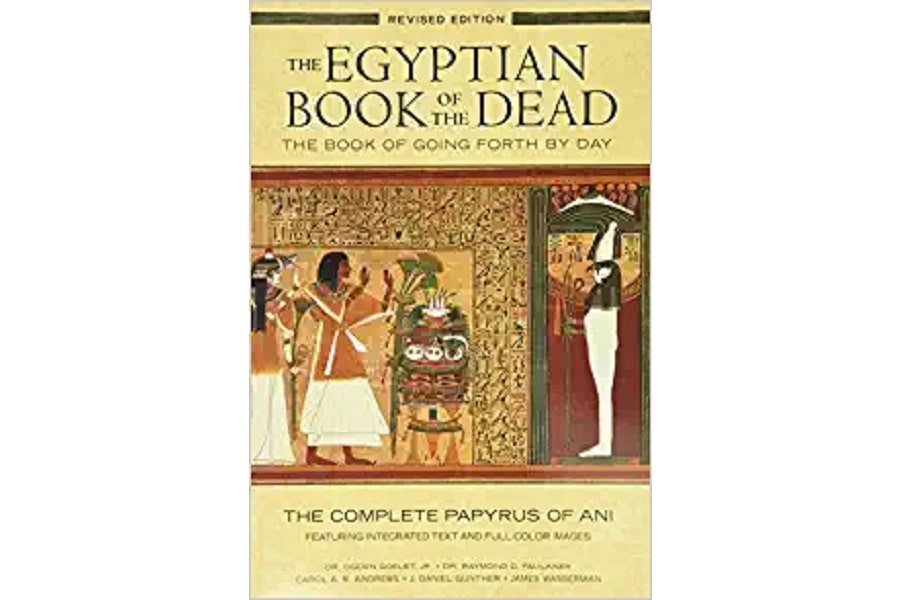
Egyptian Mythology in Popular Media
Now, it’s impossible to discuss Egyptian mythology without noting its impact on popular media. We all know of Elizabeth Taylor’s role as Cleopatra; Gerard Butler’s 2016 take on the god Set; and of the running gag that all deserts in video games look suspiciously like watered-down takes on ancient Egypt.
Western interest in Egypt isn’t anything new. Romantics caught on to the Egyptomania of the 19th century, and kicked off the beginning of modern Egyptology. This led to the Egyptian Revival of the ‘20s and the growing presence of ancient Egypt in the media.
Viewed as the center for exotic opulence throughout the fad of Orientalism, the Western world attached itself to Egyptian epics. Information about the ancient civilization became a muddled mix of historicity and fantasy. Ancient Egypt became terribly misconstrued as nothing but pyramids, deserts, the Great Sphinx, and the Nile; the accomplishments of the storied nation became minimalized in favor of Western wonder.
The myths and stories of Egyptian mythology have found themselves in film time and time again. The dividing line between appropriate representation in media and inaccurate content is the inclusion of a qualified Egyptologist. Due to the above, the accuracy of films to actual myths varies.
- The Mummy
- Agora
- Faraon (Pharaoh)
- Moon Knight
What is the Central Theme of Egyptian Mythology?
Most of the Egyptian mythology surrounds the belief in rebirth, magic, and life after death in Duat. There is a misconception that the ancient Egyptians were a death-obsessed civilization. From mummies to grand pyramids, and seemingly exhaustive efforts being made for burials and funeral rites. However, such a belief was far from the truth.
The ancient Egyptians had a vehement love for life. So much so, that they believed there was life after the one lived on Earth. That there were gods who cared for them in the afterlife until their time to be reborn came. You see, eternal life was the pinnacle.
In ancient Egypt, mythology acted as a means to explain natural phenomena. Storms, drought, famine, and death were things to be feared. Chaos, above all else, was the greatest threat to the civilization’s stability. Thereby, the promise of a secure life after the one lived is the backbone of Egyptian mythology.